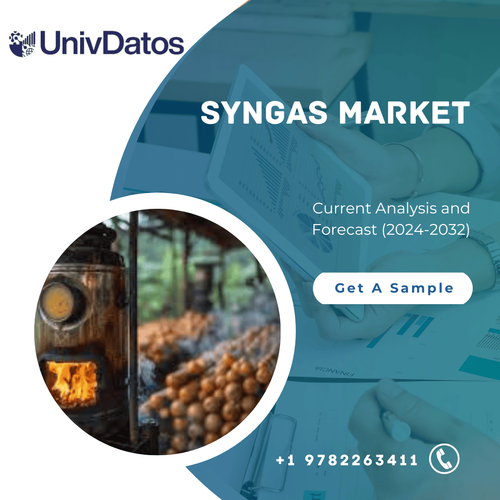Turbine Oil Market: Current Analysis and Forecast (2024-2032)
Emphasis on Activity (On-Farm Sales, Outdoor Recreation, Educational Tourism, Accommodations, and Others); Sales Channel (Travel Agents, and Direct Sales); Region/Country.
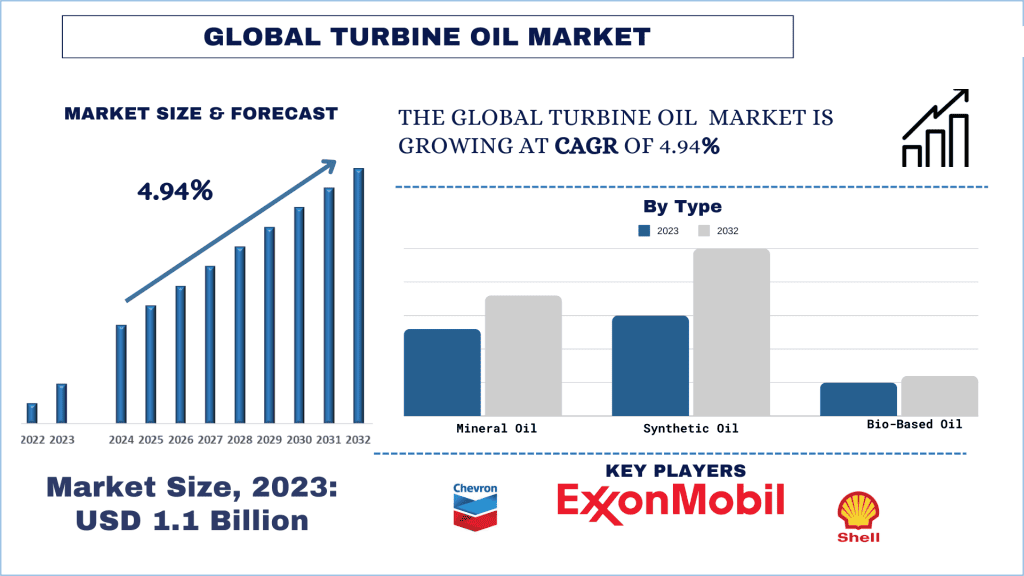
Turbine Oil Market Size & Forecast
The Turbine Oil Market was valued at USD 1.1 Billion and is expected to grow at a strong CAGR of around 4.94 % during the forecast period (2024-2030).
Turbine Oil Market Analysis
In a dynamic global landscape propelled by the increasing demand for energy, the turbine oil market plays an important role in the machinery of progress. As the world’s reliance on reliable and efficient power generation cis continuously grows, turbine oils’ role has become increasingly vital. These specialized lubricants ensure the smooth and optimized operation of turbines, serving as the lifeblood of power plants, industrial facilities, and transportation systems worldwide.
Turbine Oil Market Trends
The turbine oil (ECV) market is a dynamic space undergoing rapid transformation. Here’s a breakdown of key trends shaping its future.
The Rise of Renewable Energy and its Impact on Turbine Oils
As the renewable energy sector expands, the demand for innovative, eco-friendly solutions has never increased. One such solution is the emergence of biodegradable turbine oil, poised to revolutionize the hydropower industry.
“In Fiscal Year 2023, Tetramer took its cutting-edge hydropower oil one step closer to adoption by expanding its use for different machinery components and testing various versions at the Porjus Hydropower Centre in Sweden”.
The Evolving Needs of Traditional Power Generation
The renewable energy sector has been evolving, and with it, the turbine oil market has also had to adapt to the changing demands of traditional power generation. As aging power plants undergo modernization and new facilities are constructed, the need for high-performance turbine oils that can withstand the rigors of these advanced systems has become paramount.
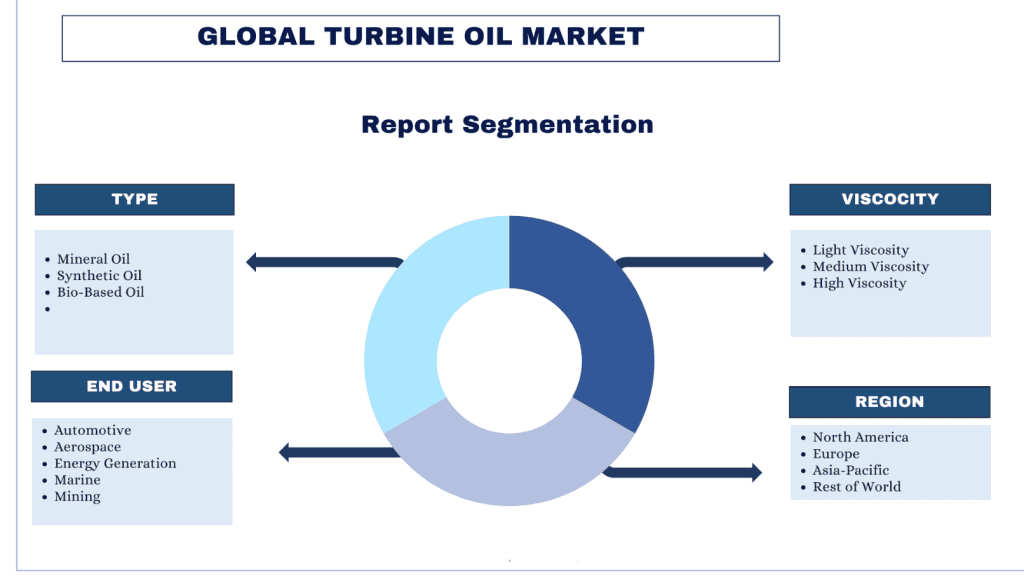
Asia Pacific is Expected to Grow with a Significant CAGR During Forecast Period.
Asia Pacific region continues to drive the global energy landscape; the turbine oil market is poised to experience sustained growth and solidify its position as the industry’s powerhouse. The region’s insatiable appetite for power generation, coupled with its leadership in renewable energy transition and a strong focus on environmental regulations. The increasing adoption of renewable energy sources, such as hydroelectric power and wind turbines, has created a surge in demand for turbine oil. As governments in the region implement stricter environmental regulations, the demand for turbine oil is expected to continue growing, cementing Asia Pacific’s position as a dominant player in the global turbine oil market.
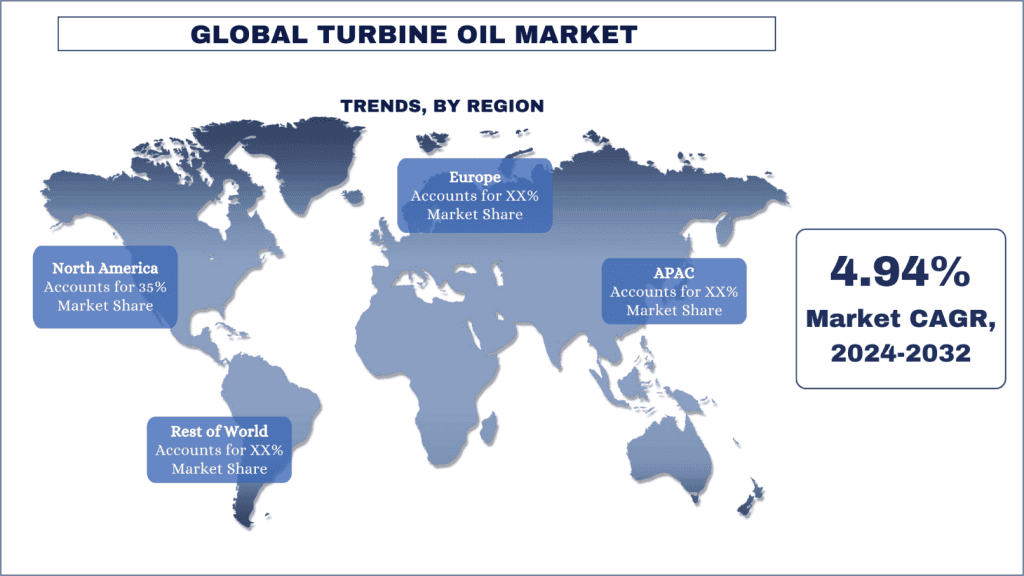
Turbine Oil Industry Overview
The turbine oil market is competitive and fragmented, with several global and international market players. The key players are adopting different growth strategies to enhance their market presence, such as partnerships, agreements, collaborations, new product launches, geographical expansions, and mergers and acquisitions. Some of the major players operating in the market Chevron Corporation, Exxon Mobil Corporation, Shell India, Penrite Oil, FUCHS, LUKOIL, Eastern Petroleum, Eastman Chemical Corporation, Total Energies, Idemitsu, and Kosan Co.Pvt. Ltd.
Turbine Oil Market News
2022:
Shell: Launched a new range of turbine oils, designed to improve efficiency and reduce emissions in power generation applications.
ExxonMobil: Introduced a new biolubricant, made from renewable sources, for use in turbine applications.
2023:
TotalEnergies: Announced a partnership with a leading renewable energy company to develop sustainable turbine oil solutions for wind power applications.
Chevron: Launched a new line of turbine oils, designed to improve performance and reduce maintenance costs in power generation applications.
2024:
BP: Introduced a new range of bio-based turbine oils made from renewable sources for power generation applications.
Siemens Energy: Announced a partnership with a leading turbine oil manufacturer to develop sustainable turbine oil solutions for gas power applications.
Turbine Oil Market Report Coverage
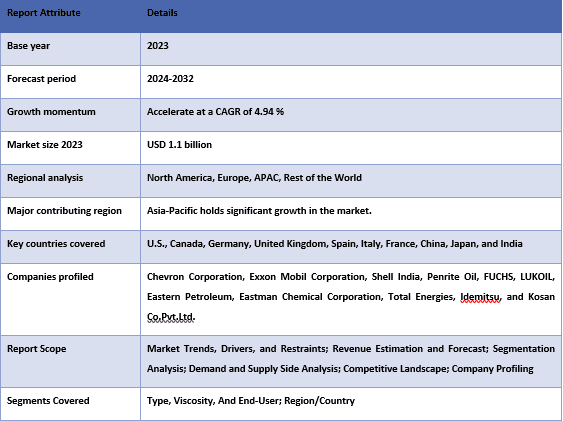
Reasons to buy this report:
- The study includes market sizing and forecasting analysis validated by authenticated key industry experts.
- The report briefly reviews overall industry performance at one glance.
- The report covers an in-depth analysis of prominent industry peers, primarily focusing on key business financials, product portfolios, expansion strategies, and recent developments.
- Detailed examination of drivers, restraints, key trends, and opportunities prevailing in the industry.
- The study comprehensively covers the market across different segments.
- Deep dive regional level analysis of the industry.
Customization Options:
The global turbine oil market can further be customized per the requirement or any other market segment. Besides this, UMI understands that you may have your own business needs; hence, feel free to connect with us to get a report that completely suits your requirements.
Table of Contents
Research Methodology for the Turbine Oil Market Analysis (2024-2032)
Analyzing the historical market, estimating the current market, and forecasting the future market of th global turbine oil market were the three major steps undertaken to create and analyze the adoption of turbine oil in major regions globally. Exhaustive secondary research was conducted to collect the historical market numbers and estimate the current market size. Secondly, to validate these insights, numerous findings and assumptions were taken into consideration. Moreover, exhaustive primary interviews were also conducted, with industry experts across the value chain of the global turbine oil market. Post assumption and validation of market numbers through primary interviews, we employed a top-down/bottom-up approach to forecasting the complete market size. Thereafter, market breakdown and data triangulation methods were adopted to estimate and analyze the market size of segments and sub-segments of the industry pertains to. Detailed methodology is explained below:
Analysis of Historical Market Size
Step 1: In-Depth Study of Secondary Sources:
A detailed secondary study was conducted to obtain the historical market size of the turbine oil market through company internal sources such as annual reports and financial statements, performance presentations, press releases, etc., and external sources including journals, news and articles, government publications, competitor publications, sector reports, third-party databases, and other credible publications.
Step 2: Market Segmentation:
After obtaining the historical market size of the turbine oil market, we conducted a detailed secondary analysis to gather historical market insights and share for different segments and sub-segments for major regions. The report includes major segments such as type, viscosity, and end user. Further country-level analyses were conducted to evaluate the overall adoption.
Step 3: Factor Analysis:
After acquiring the historical market size of different segments and sub-segments, we conducted a detailed factor analysis to estimate the current market size of the turbine oil market. Further, we conducted factor analysis using dependent and independent variables. A thorough analysis was conducted for demand and supply-side scenarios considering top partnerships, mergers and acquisitions, business expansion, and product launches in the global turbine oil market.
Current Market Size Estimate & Forecast
Current Market Sizing: Based on actionable insights from the above 3 steps, we arrived at the current market size, key players in the global turbine oil market, and market shares of the segments. All the required percentage shares split, and market breakdowns were determined using the above-mentioned secondary approach and were verified through primary interviews.
Estimation & Forecasting: For market estimation and forecast, weights were assigned to different factors including drivers & trends, restraints, and opportunities available for the stakeholders. After analyzing these factors, relevant forecasting techniques i.e., the top-down/bottom-up approach were applied to arrive at the market forecast for 2032 for different segments and sub-segments across the major markets globally. The research methodology adopted to estimate the market size encompasses:
- The industry’s market size, in terms of revenue (USD) and the adoption rate of the turbine oil market across the major markets domestically
- All percentage shares, splits, and breakdowns of market segments and sub-segments
- Key players in the global turbine oil market in terms of products offered. Also, the growth strategies adopted by these players to compete in the fast-growing market.
Market Size and Share Validation
Primary Research: In-depth interviews were conducted with the Key Opinion Leaders (KOLs) including Top Level Executives (CXO/VPs, Sales Head, Marketing Head, Operational Head, Regional Head, Country Head, etc.) across major regions. Primary research findings were then summarized, and statistical analysis was performed to prove the stated hypothesis. Inputs from primary research were consolidated with secondary findings, hence turning information into actionable insights.
Split of Primary Participants in Different Regions
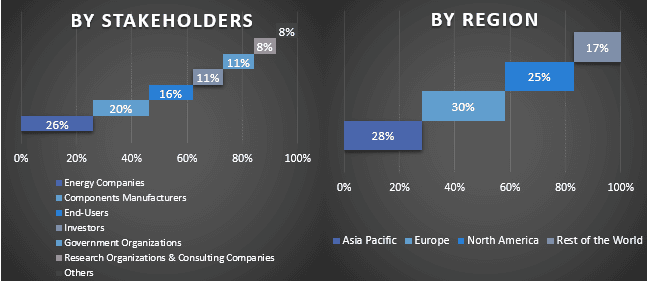
Market Engineering
The data triangulation technique was employed to complete the overall market estimation and to arrive at precise statistical numbers for each segment and sub-segment of the global turbine oil market. Data was split into several segments and sub-segments after studying various parameters and trends in the areas of type, viscosity, and end-user in the global turbine oil market.
The main objective of the Global Turbine Oil Market Study
The current & future market trends of the global turbine oil market were pinpointed in the study. Investors can gain strategic insights to base their discretion for investments on the qualitative and quantitative analysis performed in the study. Current and future market trends determined the overall attractiveness of the market at a regional level, providing a platform for the industrial participant to exploit the untapped market to benefit from a first-mover advantage. Other quantitative goals of the studies include:
- Analyze the current and forecast market size of the turbine oil market in terms of value (USD). Also, analyze the current and forecast market size of different segments and sub-segments.
- Segments in the study include areas of the type, viscosity, and end user.
- Define and analysis of the regulatory framework for the turbine oil
- Analyze the value chain involved with the presence of various intermediaries, along with analyzing customer and competitor behaviors of the industry.
- Analyze the current and forecast market size of the turbine oil market for the major region.
- Major countries of regions studied in the report include Asia Pacific, Europe, North America, and the Rest of the World
- Company profiles of the turbine oil market and the growth strategies adopted by the market players to sustain in the fast-growing market.
- Deep dive regional level analysis of the industry
Frequently Asked Questions FAQs
Q1: What is the turbine oil market's current size and growth potential?
Q2: What are the driving factors for the growth of the turbine oil market?
Q3: Which segment has the largest turbine oil market share by type?
Q4: What are the emerging technologies and trends in the turbine oil market?
Q5: Which region will dominate the turbine oil market?
Related Reports
Customers who bought this item also bought



